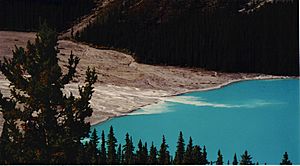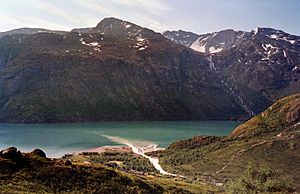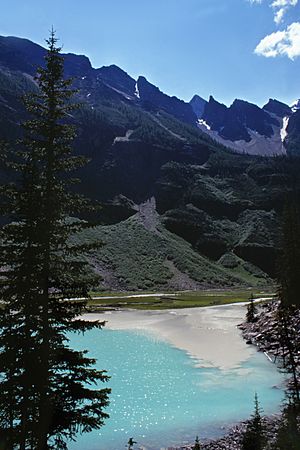Rock flour facts for kids

Rock flour, also called glacial flour, is made of tiny bits of rock. These pieces are as small as clay particles. They are created when huge sheets of ice, called glaciers, grind down rocks. It can also be made by machines that crush rocks into a fine powder.
Because rock flour is so tiny, it floats in river water. This makes the water look cloudy, almost like milk. When this cloudy water flows into a glacial lake, the lake can turn a beautiful turquoise color. You can see this amazing effect at places like Lake Louise in Canada and Gjende lake in Norway.
Rock Flour for Healthy Soil
Some experts who study farming and soil believe rock flour can help make soil healthier. They think it can put important minerals back into the ground. These minerals are often missing from soil after many years of farming.
One early person to experiment with rock flour was a German miller named Julius Hensel. In the 1890s, he wrote a book called Bread from Stones. He shared how he had good results using "stonemeal" (which is rock flour) to grow plants.
At the time, his ideas were not widely used. This was partly because the tools needed to spread the rock flour were not very good. Also, some people preferred using regular fertilizers that were already common.
Images for kids
-
Rock flour makes the water's color brighter at Hokitika Gorge on the West Coast of New Zealand





